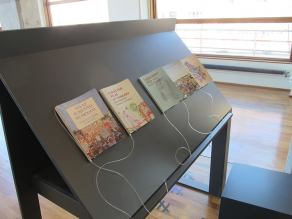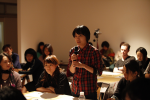La Province de Hainaut souhaite saluer ce patrimoine vivant à travers une exposition collective qui réunira sous un même concept des sites et événements aussi divers que les Gilles de Binche, la Ducasse de Mons, la Ducasse d’Ath, les Beffrois, les Ascenseurs hydrauliques du Canal du Centre historique, les sites charbonniers du Bois du Cazier, Bois du Luc et Grand-Hornu, la cathédrale de Tournai et les minières de Spiennes.
Jouant sur le dénominateur commun de ces identités si distinctes, à savoir la notion de territoire, l’exposition exploitera le concept de l’atlas, ouvrage qui, au-delà de ses cartes géographiques, fournit une représentation des conceptions politiques, sociales, idéologiques et culturelles d’une société ou d’une culture donnée.
Sous la direction artistique de la graphiste Annelys De Vet, la Province de Hainaut et ses partenaires éditeront un Atlas Subjectif du Hainaut défini par son patrimoine classé à l’Unesco. Ultime volume d’une collection qui cartographie des pays et réalités aussi divers que la Hongrie, la Palestine, le Mexique ou les Pays-Bas, cet ouvrage remplira les conditions particulières formulées par Annelys De Vet.
Celles-ci prévoient que le contenu projette une certaine vision, subjective, d’un pays ou d’une région, grâce à la participation de ses habitants. Ceux-ci sont invités à cartographier leur pays à leur manière, politique, critique, culinaire, romantique, humoristique. L’implication personnelle est donc le point de départ d’un projet qui entend produire des images humaines, non conventionnelles.
Les 14 sites classés seront les relais de l’équipe éditoriale vers les citoyens. Durant quatre mois, ceux-ci seront invités, via des associations, des écoles et les réseaux des quatorze partenaires, à produire photographies, dessins, cartes, drapeaux et autres travaux à publier au fil des pages, en fonction de thèmes pertinents, offrant des points de vue alternatifs sur le patrimoine et l’histoire du Hainaut sous le prisme des sites classés à l’Unesco.
Le matériel produit dans le cadre de la publication fournira la matière de l’exposition qui se tiendra au Centre Wallonie-Bruxelles de Paris, assurant ainsi le rayonnement de la Province de Hainaut à travers son patrimoine et le regard décalé qu’elle porte sur une réalité multiple.
Cette invitation s’adresse aux directions et équipes des 14 patrimoines classés ainsi qu’à tous les relais potentiels du projet Subjective Atlas. Ceux-ci peuvent être des représentants d’écoles, d’académies, d’associations d’artistes, d’associations citoyennes ou des artistes, designers, graphistes, architectes, stylistes et autres créatifs individuels. Ils seront invités à contribuer à la réalisation de l’Atlas par de petites contributions personnelles.































